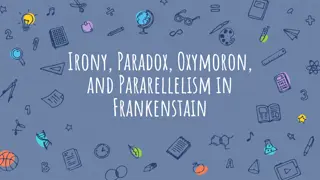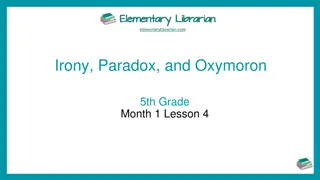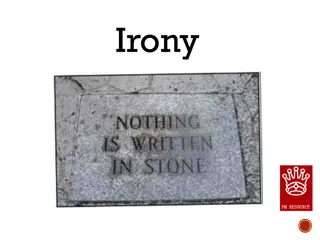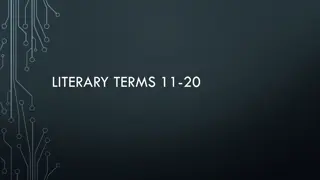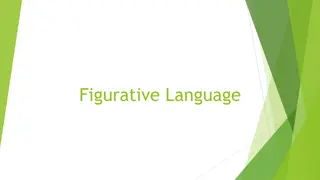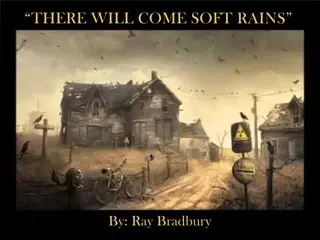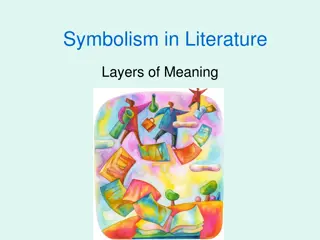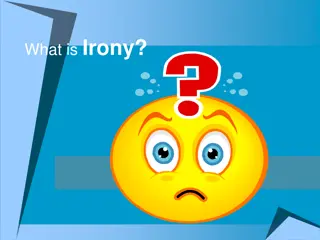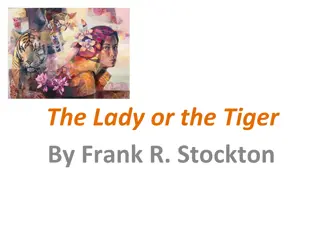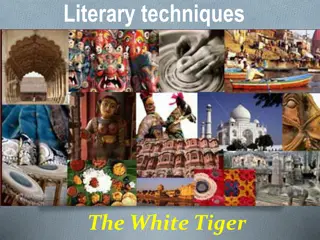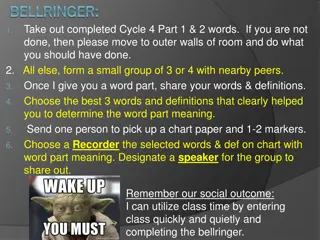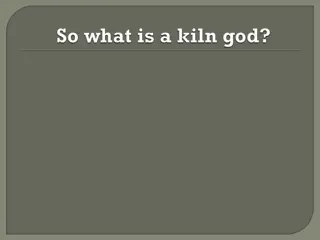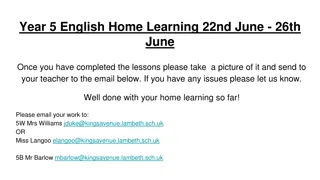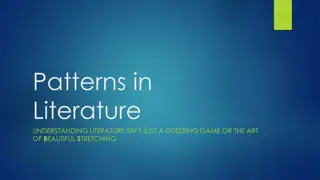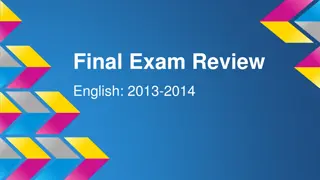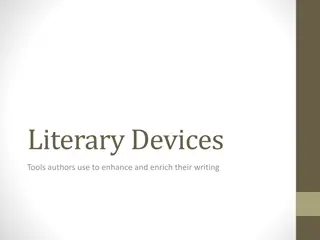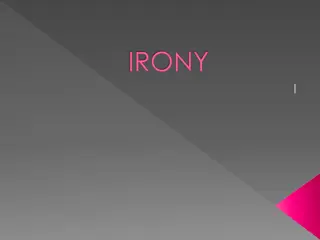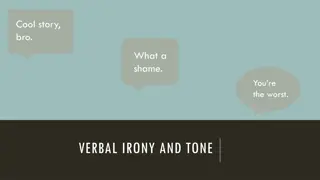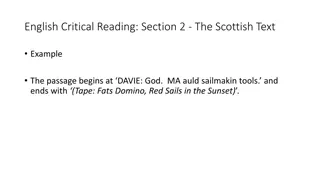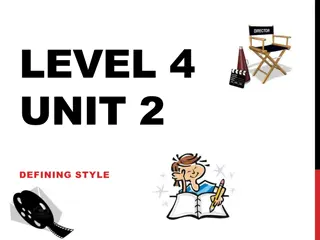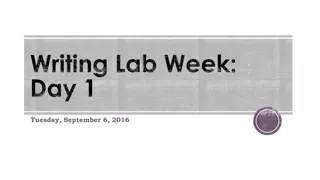Understanding Symbolism and Irony in Literature
Symbolism in literature involves using symbols to convey deeper meanings beyond the literal sense, adding layers of interpretation for readers. Common symbols like doves, red roses, and sunrises represent peace, love, and new beginnings, respectively. Irony, on the other hand, includes situational, verbal, and dramatic types, showcasing unexpected outcomes or contrasts between expectation and reality. Explore the power of symbolism and irony to enhance storytelling and provoke thought in literary works.
Download Presentation

Please find below an Image/Link to download the presentation.
The content on the website is provided AS IS for your information and personal use only. It may not be sold, licensed, or shared on other websites without obtaining consent from the author. Download presentation by click this link. If you encounter any issues during the download, it is possible that the publisher has removed the file from their server.
E N D
Presentation Transcript
Symbols and Irony in Literature What is Symbolism? Symbolism is the use of symbols to signify ideas and qualities by giving them symbolic meanings that are different from their literal sense. Symbolism can take different forms
Functions of Symbolism Symbolism gives a writer freedom to add double levels of meanings to his work: a literal one that is self-evident and the symbolic one whose meaning is far more profound than the literal one. Symbolism in literature evokes interest in readers as they find an opportunity to get an insight of the writer s mind on how he views the world and how he thinks of common objects and actions, having broader implications.
Common Symbols A dove is a symbol of peace The color red or a red rose is a symbol for love or romance A sunrise is a symbol for a new start What is the symbolism involved in: (answer in notes lines to the right An eagle A skull Spring time )
Situational Irony Irony An outcome that turns out to be very different from what was expected, the difference between what is expected to happened and what actually does. Example: The fire station burns down A pilot that has a fear of flying A police station gets robbed opposite A contrast between the expectations for a situation and what is reality. There are three types of irony: Situational Verbal Dramatic
Verbal irony Verbal irony when a speaker speaks something contradictory to what he intends. A statement with an underlying meaning. Also known as Sarcasm, Mockery Examples: Looking at her son s messy room, Mom says, Wow, you could win an award for cleanliness! On the way to school, the school bus gets a flat tire and the bus driver says, Excellent! This day couldn t start off any better!
Dramatic Irony Dramatic irony is when the reader or audience knows something that the character does not. Examples: In a scary movie, the character walks into a house and the audience knows the killer is in the house when the owner enters In Toy Story, Buzz thinks he is a real space ranger, but we know he is a child s toy.


